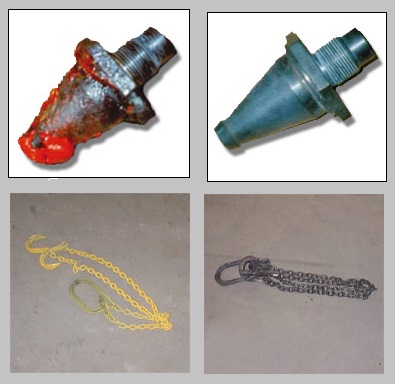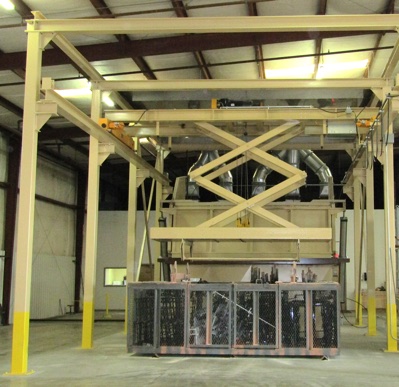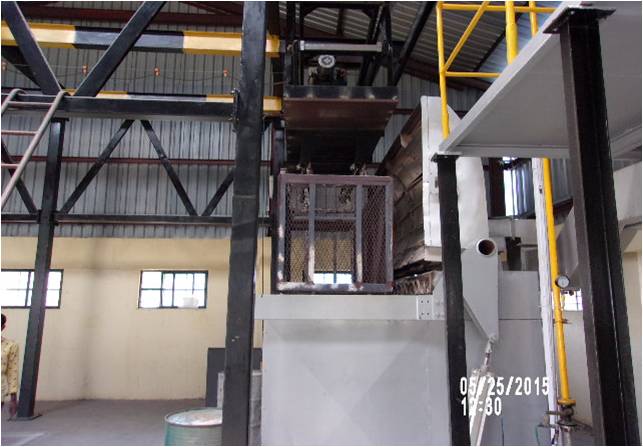How it works
FLUIDIZED BED CLEANING CYCLE
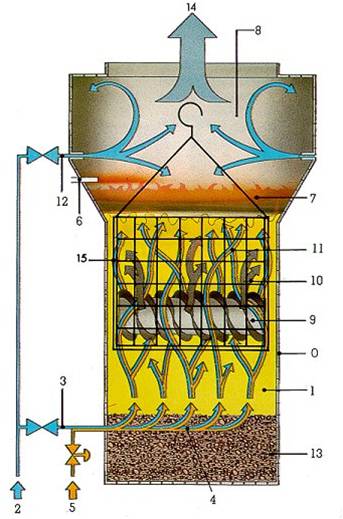
0. Fluidised bed 1. Calibrated quartz sand 2. Air supply
3. Primary air 4. Gas-air distributor 5. Gas-air mixture
6. Pilot burner 7. Main flame 8. Post-combustion chamber
9. Machine parts 10. Pyrolysis gases 11. Gas air mixture
12. Secondary air supply 13. Insulating layer 14. Exhaust fan 15. Basket
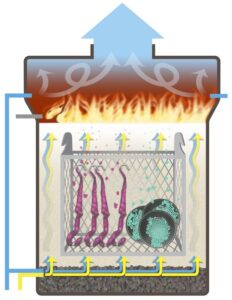
1 A fluidized bed consists of a reservoir filled with calibrated sand.
2 The sand particles are brought to a bubbling state by injecting air at the bottom of the bed.
3 In order to warm up the sand, gas is mixed into the primary air.
4 A pilot burner above the surface of the bubbling sand bed ignites the gas-air mixture – the flame spreads across the whole surface.
5. Due to the excellent heat transfer in the bed itself – the fluidized bed is heated quickly and uniformly
6. Normal operating temperatures ≈780 to 850°F
7. The bed temperature can be adjusted by using an automatic temperature regulator, which controls the gas flow.
8. Immersion of basket with contaminated metal parts in hot sand.
9. The bonded organic substances are gasified.
10. These process gases rise through the fluidized bed and are directly burned by a flame-shield.
11. The energy is also directly absorbed by the sand – direct energy recovery – the external gas supply is correspondingly reduced.
12. Total burnout of the gases by injecting secondary air into the combustion chamber.
13. Inorganic particles are also removed from the metal parts (without damage) by slight movement of the sand and are carried along with the flue gas stream.
14. These inert dust particles are seperated from the flue gases by de-dusting through a cyclone battery or ceramic filter. The particles fall into the collector reservoir under the cyclone or ceramic filter and can easily be removed.
The next cycle can begin immediately by immersing another basket in the fluidized bed with the hoisting system.

